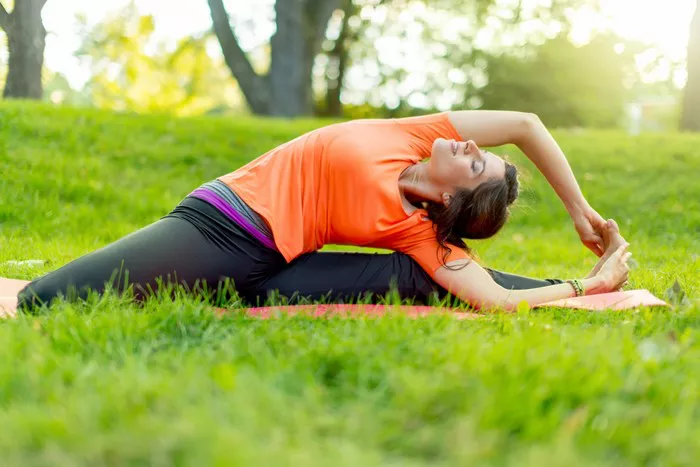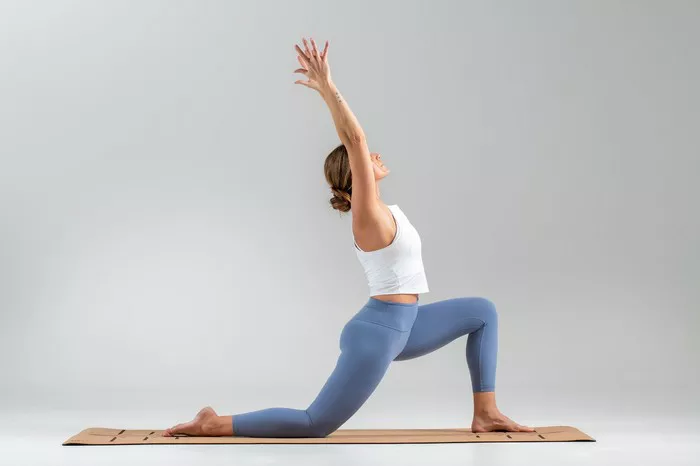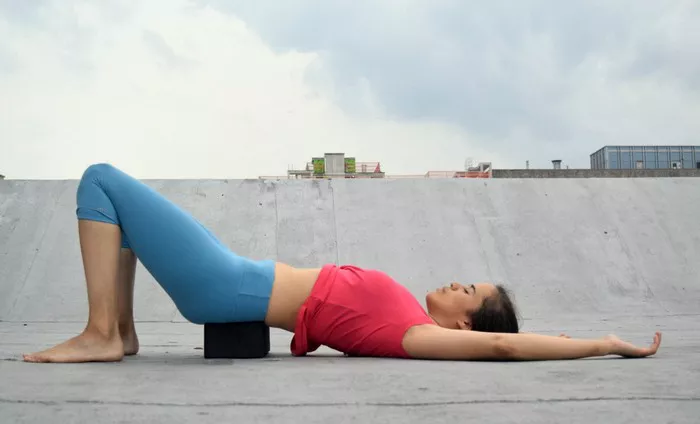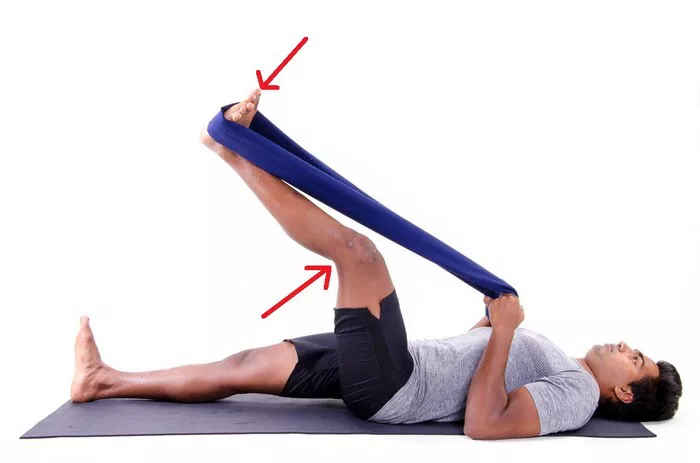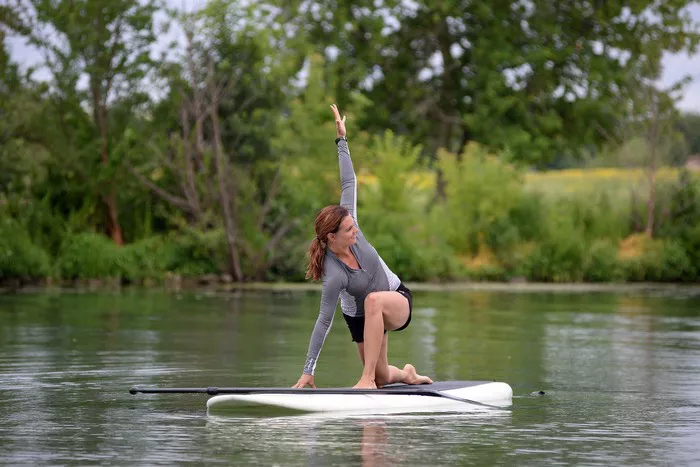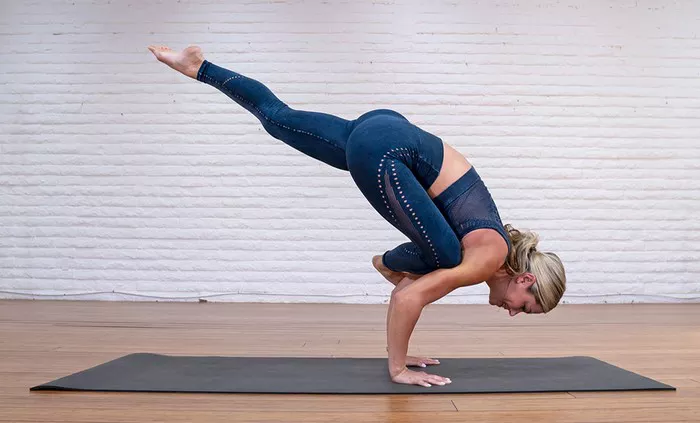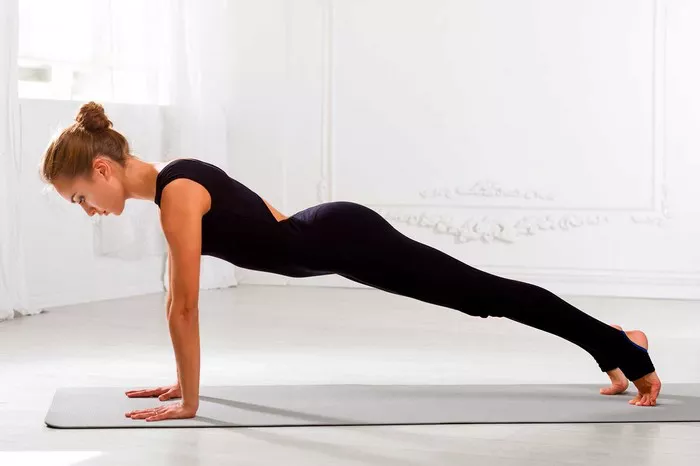Vrikshasana, also known as the Tree Pose, is a fundamental standing yoga posture that promotes balance, focus, and physical stability. It derives its name from the Sanskrit word “vriksha,” meaning tree, symbolizing rootedness and strength. This pose is often included in yoga routines for its simplicity and effectiveness in improving both mental and physical well-being. While it is not typically the first pose associated with weight loss, its benefits extend far beyond flexibility and mindfulness.
By standing tall on one leg and placing the other foot on the thigh or calf, practitioners engage multiple muscle groups simultaneously. This engagement promotes strength, especially in the lower body and core. In recent years, fitness experts and yoga practitioners have begun to explore the relationship between static postures like Vrikshasana and weight loss, offering intriguing insights into how such poses can support a healthy weight management plan.
Understanding Weight Loss and Yoga
Weight loss generally involves burning more calories than are consumed, achieved through a combination of dietary changes, increased physical activity, and lifestyle modifications. While high-intensity workouts are traditionally preferred for shedding weight, yoga offers a more holistic approach. It combines physical exertion with breath control and mindfulness, which can positively influence metabolism, stress levels, and hormonal balance.
Yoga may not burn calories as rapidly as aerobic exercises, but it builds lean muscle mass, improves digestion, and enhances mental discipline. All these elements contribute to more sustainable and long-term weight management. Moreover, consistent yoga practice has been shown to reduce cortisol levels, a stress hormone linked to abdominal fat. Incorporating asanas like Vrikshasana into a regular yoga routine can thus indirectly aid weight loss.
The Mechanics of Vrikshasana
To understand how Vrikshasana may influence weight loss, it’s essential to break down the mechanics of the pose. Here’s a step-by-step explanation:
- Starting Position: Begin in Tadasana (Mountain Pose), standing tall with feet together and arms by your sides.
- Foot Placement: Shift your weight onto your left foot. Bend your right knee and place the sole of the right foot on the inner thigh (or calf) of the left leg, avoiding the knee.
- Balance and Alignment: Ensure your pelvis is neutral and your hips are squared forward.
- Arm Position: Bring your palms together in a prayer position at your chest or extend them overhead like tree branches.
- Hold the Pose: Maintain the position while breathing deeply for 30 seconds to one minute.
This posture activates the legs, engages the core, and improves posture, all of which can contribute to energy expenditure and muscle toning.
How Vrikshasana Supports Weight Loss
While Vrikshasana is not a high-intensity exercise, it supports weight loss through various mechanisms:
1. Muscle Engagement
Holding the Tree Pose requires activation of the leg muscles, core, and stabilizers. Over time, this builds lean muscle mass, which increases resting metabolic rate (RMR). The more lean muscle you have, the more calories your body burns at rest.
2. Improved Posture and Alignment
A good posture improves body mechanics and makes everyday movements more efficient. Proper alignment in Vrikshasana strengthens the spine and abdominal muscles, which helps reduce the risk of injury and improves overall mobility. Better movement efficiency can translate into more physical activity and higher daily calorie burn.
3. Stress Reduction
Chronic stress is a known contributor to weight gain, particularly around the abdomen, due to elevated cortisol levels. Practicing Vrikshasana with mindful breathing reduces stress, promotes relaxation, and lowers cortisol. Reduced stress also decreases emotional eating and improves sleep quality, both of which are critical for weight loss.
4. Mindful Eating and Body Awareness
Yoga promotes mindfulness, which can carry over into eating habits. Practitioners become more attuned to hunger cues and less likely to overeat. Vrikshasana, with its requirement for focus and balance, reinforces the mind-body connection, encouraging a more conscious approach to nutrition and lifestyle.
Expert Opinions on Vrikshasana for Weight Management
Yoga Instructors
Many experienced yoga instructors advocate for the inclusion of balance poses like Vrikshasana in weight loss routines. According to them, while such poses don’t produce immediate calorie deficits, they build foundational strength, improve coordination, and foster discipline, which collectively support weight loss goals.
Fitness Trainers
Some fitness experts agree that integrating yoga poses into a broader fitness plan can enhance outcomes. For instance, combining strength training with yoga can improve flexibility and reduce injury risk. Vrikshasana, when performed consistently, contributes to better muscle tone and mental focus, which are essential for sustained fitness.
Nutritionists
Nutritionists also note that yoga helps regulate appetite and digestion. Practicing poses like Vrikshasana regularly can support gut health and metabolic processes. When combined with a balanced diet, the benefits multiply, leading to more effective weight management.
Integrating Vrikshasana into a Weight Loss Routine
To maximize the benefits of Vrikshasana for weight loss, it’s crucial to integrate it into a well-rounded routine:
1. Combine with Dynamic Yoga Sequences
Include Vrikshasana within dynamic yoga sequences like Vinyasa or Power Yoga to raise the heart rate and burn more calories. Performing Tree Pose between flowing movements can offer a moment of balance while keeping the intensity consistent.
2. Practice Regularly
Consistency is key in yoga. Practicing Vrikshasana at least 3-5 times a week can help build strength and improve balance. Over time, these gains support higher physical performance and more active lifestyles, which are crucial for weight loss.
3. Focus on Breath Control
Deep, controlled breathing enhances the oxygen flow to muscles, aids relaxation, and improves metabolic function. Synchronizing breath with movement amplifies the effectiveness of the pose and supports fat metabolism.
4. Combine with Cardio and Strength Training
For those aiming for significant weight loss, Vrikshasana should be one part of a diversified routine. Include aerobic exercises like walking, jogging, or cycling, and incorporate strength training to enhance calorie burning.
5. Monitor Progress
Keep track of your practice and progress. Whether through journaling or using a fitness app, recording how often you practice Vrikshasana and noting physical and mental changes can be motivating and insightful.
Common Mistakes and How to Avoid Them
- Incorrect Foot Placement: Avoid placing the foot directly on the knee joint, as it can cause strain.
- Leaning Sideways: Keep your spine straight and avoid leaning to maintain proper alignment.
- Tensed Shoulders: Relax your shoulders even if your arms are raised.
- Holding Breath: Maintain steady and deep breathing throughout the pose.
- Overdoing It: Like any exercise, over-practicing without rest can lead to fatigue or injury. Balance your routine.
Benefits Beyond Weight Loss
Vrikshasana offers a multitude of benefits aside from aiding weight loss:
- Improved Concentration: The need to focus enhances mental clarity.
- Better Balance: Strengthens stabilizing muscles and improves coordination.
- Enhanced Flexibility: Opens up the hips and stretches the groin.
- Stronger Joints: Builds endurance in the ankle, knee, and hip joints.
- Increased Confidence: Success in holding the pose can boost self-esteem and determination.
Conclusion
While Vrikshasana may not be a standalone solution for weight loss, it plays a supportive and enriching role in a comprehensive fitness and wellness strategy. By engaging muscles, improving posture, reducing stress, and fostering mindfulness, this seemingly simple yoga pose contributes significantly to sustainable weight management. Its real power lies in its ability to harmonize the body and mind, making healthier choices feel more natural and intuitive.
For best results, combine Vrikshasana with other physical activities and a nutritious diet. Remember, the journey to weight loss is not just about burning calories but also about building habits that nourish and empower your entire being.
FAQs
Q1: Can beginners do Vrikshasana for weight loss?
Yes, Vrikshasana is beginner-friendly and can be performed with modifications. It helps improve balance, focus, and core strength, all of which contribute to overall fitness and weight management.
Q2: How long should I hold Vrikshasana to see results?
Holding the pose for 30 seconds to 1 minute on each side, practiced consistently 3-5 times a week, can yield noticeable improvements in balance and muscle tone within a few weeks.
Q3: Does Vrikshasana burn a lot of calories?
Vrikshasana is a low-intensity pose, so it does not burn as many calories as cardio exercises. However, it builds lean muscle and promotes mindfulness, which support overall weight loss.
Q4: Can I practice Vrikshasana if I have knee problems?
Yes, but with caution. Place the foot on the calf instead of the thigh or consult a physical therapist or yoga instructor for safe modifications.
Q5: Is Vrikshasana effective for belly fat?
While it doesn’t target belly fat directly, Vrikshasana strengthens core muscles and reduces stress, both of which can help reduce abdominal fat over time as part of a balanced routine.
Related Topics:



